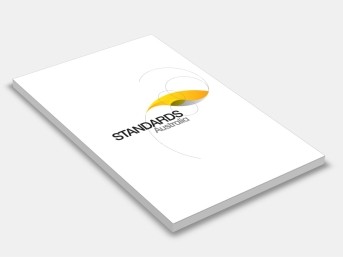AS 2746-2008 Working areas for gas-fuelled vehicles
Standards Australia
Supersedes: AS 2746-1999 Working areas for gas-fuelled vehicles
Draft Designation: DR 07372The principal change in this edition of the Standard is the introduction of workshop safety requirements when dealing with Liquefied Natural Gas (LNG) fuelled engines. The layout and content have been restructured to facilitate the introduction of requirements for working areas containing LNG fuelled vehicles. This edition introduces a new Appendix E that exclusively deals with LNG fuel unloading methods as an addition to the requirements for CNG and LP Gas.
This edition also includes a new requirement for the correct disposal and destruction of Gas Compliance Plates once a vehicle is scrapped.
The Foreword sets out certain fundamental considerations that are the basis from which this Standard was developed.
The terms ‘normative’ and ‘informative’ have been used in this Standard to define the application of the appendix to which they apply. A ‘normative’ appendix is an integral part of a Standard, whereas an ‘informative’ appendix is only for information and guidance.
Originated as AS 2746-1985. Previous edition 1999. Third edition 2008.
This Standard sets out requirements for the premises, and procedures for the following types of work or activity associated with gas-fuelled vehicles:
(a) Converting and equipping vehicles to use gas such as liquefied petroleum gas (LP Gas), or natural gas (CNG and LNG) as an engine fuel.
(b) Maintenance, servicing and repairs to the gas fuel system, e.g. adjustment, maintenance and replacement of gas system componentry.
(c) Routine motor vehicle maintenance not involving the gas fuel system, e.g. lubrication, brake repair or wheel alignment, body or windscreen repairs, engine tuning.
NOTE: The operations described in Items (a) or (b) above are undertaken in a specialist gas working area, whereas Item (c) would apply to general service workshops not having any specific requirements for working with gaseous engine fuels.
Contents:
Scetion 1: Scope And General
Section 2: General Service Working Areas
Section 3: Gas Leakage Procedures
Section 4: Specialist Gas Working Areas - LP Gas
Section 5: Specialist Gas Working Areas - CNG And LNG
Section 6: Fire Safety
Appendix A: Regulating Agency Information
Appendix B: Specialist Working Area Equipment
Appendix C: Lp Gas Fuel Unloading Methods
Appendix D: Cng Fuel Unloading Methods
Appendix E: Lng Fuel Unloading Methods
Appendix F: Emergency Response Guidelines For CNG Vehicles
Appendix G: Emergency Response Guidelines For LP Gas Vehicles
Appendix H: Emergency Response Guidelines For LNG Vehicles
Gas Fuel Systems for Vehicle Engines.
Australian Automobile Association; Australian Chamber of Commerce and Industry; Australian Industrial Truck Association; Department for Administrative and Information Services, SA; Department for Transport, Energy and Infrastructure, SA; Department of Natural Resources and Mines, Qld; Energy Safety, WA; Federal Chamber of Automotive Industries; Gas Association of New Zealand; International Association for Natural Gas Vehicles; Land Transport Safety Authority, New Zealand; LPG Association of New Zealand; LPG Australia; Motor Trade Association, New Zealand; Motor Traders Association of NSW; Motor Trades Association of Australia; Roads and Traffic Authority of NSW; TAFE NSW; Victorian Police.
